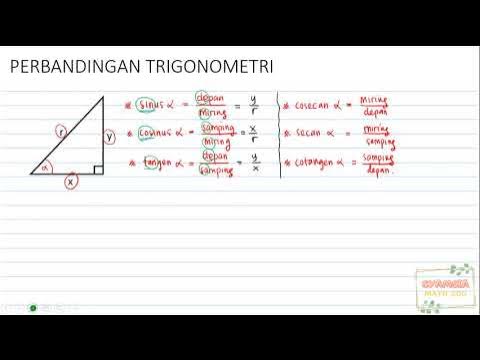Derivatives of Inverse Hyperbolic Functions
Summary
TLDRThis video tutorial covers the derivatives of inverse hyperbolic functions, presenting essential formulas for each function, such as inverse hyperbolic sine, cosine, tangent, cosecant, secant, and cotangent. It includes step-by-step examples demonstrating how to apply these formulas, with a focus on using the chain rule and product rule in various scenarios. The instructor also provides practice problems to reinforce understanding. By the end of the lesson, viewers will have a solid grasp of how to find the derivatives of these functions, enhancing their calculus skills.
Takeaways
- 😀 The derivative of the inverse hyperbolic sine function is given by \( \frac{u'}{\sqrt{u^2 + 1}} \).
- 😀 The derivative of the inverse hyperbolic cosine function is \( \frac{u'}{\sqrt{u^2 - 1}} \).
- 😀 The derivative of the inverse hyperbolic tangent function is \( \frac{u'}{1 - u^2} \), which does not involve a square root.
- 😀 For the inverse hyperbolic cosecant function, the derivative is \( -\frac{u'}{|u| \sqrt{1 + u^2}} \).
- 😀 The derivative of the inverse hyperbolic secant function is \( -\frac{u'}{u \sqrt{1 - u^2}} \).
- 😀 The derivative of the inverse hyperbolic cotangent function is the same as that of the inverse hyperbolic tangent: \( \frac{u'}{1 - u^2} \).
- 😀 To find the derivative of composite functions involving inverse hyperbolic functions, the chain rule must be applied.
- 😀 Example: The derivative of \( \text{arcsinh}(4x) \) is \( \frac{4}{\sqrt{16x^2 + 1}} \).
- 😀 Another example shows that the derivative of \( \text{arccosh}(x^3) \) is \( \frac{3x^2}{\sqrt{x^6 - 1}} \).
- 😀 The final derivative example combines different rules and yields a complex result involving simplifications.
Q & A
What is the derivative of the inverse hyperbolic sine function?
-The derivative of the inverse hyperbolic sine function, arcsinh(u), is given by u' / sqrt(u^2 + 1), where u is a function of x.
How does the derivative of the inverse hyperbolic cosine function differ from that of the inverse hyperbolic sine?
-The derivative of the inverse hyperbolic cosine function, arccosh(u), is u' / sqrt(u^2 - 1), which uses 'u squared minus 1' instead of 'u squared plus 1' as in arcsinh.
What is the formula for the derivative of the inverse hyperbolic tangent function?
-The derivative of the inverse hyperbolic tangent function, arctanh(u), is u' / (1 - u^2).
Can you explain the derivative of the inverse hyperbolic cosecant function?
-The derivative of the inverse hyperbolic cosecant function, arccsch(u), is -u' / (|u| * sqrt(1 + u^2)).
What is the significance of the absolute value in the derivative of arccsch?
-The absolute value in the derivative of arccsch ensures that the result is defined for all values of u, as cosecant can be negative.
What is the derivative of the inverse hyperbolic secant function?
-The derivative of the inverse hyperbolic secant function, arcsech(u), is -u' / (u * sqrt(1 - u^2)).
How do you apply the chain rule when finding the derivative of composite inverse hyperbolic functions?
-When using the chain rule, you differentiate the outer function and multiply it by the derivative of the inner function, applying the appropriate formula for each inverse hyperbolic function.
In the example given, how do you differentiate arcsinh(4X)?
-To differentiate arcsinh(4X), use the formula: u' / sqrt(u^2 + 1). Here, u = 4X, so u' = 4, leading to the final answer of 4 / sqrt((4X)^2 + 1).
What steps are involved in finding the derivative of arccosh(x^3)?
-First, identify u = x^3 and compute u' = 3x^2. Then apply the formula for arccosh: u' / sqrt(u^2 - 1), resulting in the expression 3x^2 / sqrt((x^3)^2 - 1).
How do you derive the function y = 6 * arcsinh(3x) + 2 * sqrt(1 + 9x^2)?
-To differentiate this, apply the product rule: find the derivative of 6 * arcsinh(3x) using its formula, and for 2 * sqrt(1 + 9x^2), apply the chain rule, combining results appropriately.
Outlines

This section is available to paid users only. Please upgrade to access this part.
Upgrade NowMindmap

This section is available to paid users only. Please upgrade to access this part.
Upgrade NowKeywords

This section is available to paid users only. Please upgrade to access this part.
Upgrade NowHighlights

This section is available to paid users only. Please upgrade to access this part.
Upgrade NowTranscripts

This section is available to paid users only. Please upgrade to access this part.
Upgrade NowBrowse More Related Video

Fungsi Hiperbolik dan Balikannya

Derivatives of Trigonometric Functions

Identitas Trigonometri - Part 1

PERBANDINGAN TRIGONOMETRI (PART 1) SINUS, COSINUS, TANGEN, SECAN, COSECAN, COTANGEN

Identitas Trigonometri: Identitas Kebalikan, Perbandingan dan Pythagoras - SMA Kelas 10

Trig Visualized: One Diagram to Rule them All (six trig functions in one diagram)
5.0 / 5 (0 votes)